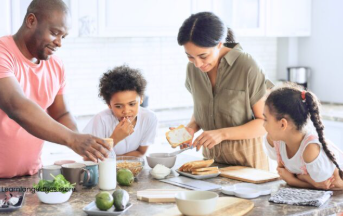Learning a new language doesn’t have to be limited to textbooks and apps—it can also happen in the kitchen! Cooking in your target language offers a fun, hands-on way to build vocabulary, improve comprehension, and enjoy cultural experiences. Here’s how to make language learning both delicious and effective through cooking.
1. Start with Simple Recipes in the Target Language
Find beginner-friendly recipes written in the language you’re learning. Look for clear instructions, basic ingredients, and simple cooking methods. As you follow the steps, you’ll naturally learn food-related vocabulary and action words.
2. Label Ingredients and Utensils
Use sticky notes to label items in your kitchen such as “salt,” “spoon,” or “cutting board” in the target language. This creates daily exposure to common words and helps reinforce memory through repetition.
3. Watch Cooking Videos or Shows
Streaming platforms and online video channels offer a wide range of cooking tutorials in many languages. Watching native speakers cook provides exposure to pronunciation, expressions, and cultural phrases in a real-life context.
4. Listen and Repeat Key Phrases
Pay attention to commonly used cooking phrases like “mix well,” “preheat the oven,” or “chop finely.” Repeating these aloud helps you practice pronunciation and makes the words easier to remember.
5. Write Your Own Recipes
Try writing down your favorite recipes in the target language. Start with simple dishes and use a dictionary or translation tool if needed. Writing reinforces grammar and vocabulary and gives you something to revisit and improve.
6. Cook with a Language Partner
If possible, cook with someone who also speaks or is learning the language. You can take turns reading instructions, describing actions, or naming ingredients. It’s a great way to practice conversation naturally.
7. Learn Cultural Context Through Cuisine
Food is a rich part of any culture. As you learn to cook traditional dishes, you also gain insight into customs, values, and traditions, deepening your connection with the language and the people who speak it.
8. Use a Cooking-Themed Vocabulary List
Create a list of food, kitchen, and cooking terms in your target language. Focus on practical words you’ll see and use regularly. Review them often to build your understanding and confidence.
9. Read Food Blogs or Magazines
Explore food-related websites, blogs, or print materials in your chosen language. These sources often include interesting stories, culinary tips, and regional vocabulary, giving you both reading practice and cultural learning.
10. Make It a Routine
Try cooking one new dish in the target language each week. This regular practice creates a fun, low-pressure way to stay engaged and improve your skills over time.
Cooking your way to language fluency can be enjoyable and rewarding. By turning mealtime into learning time, you not only expand your vocabulary but also experience the flavors, expressions, and warmth of a new culture.














